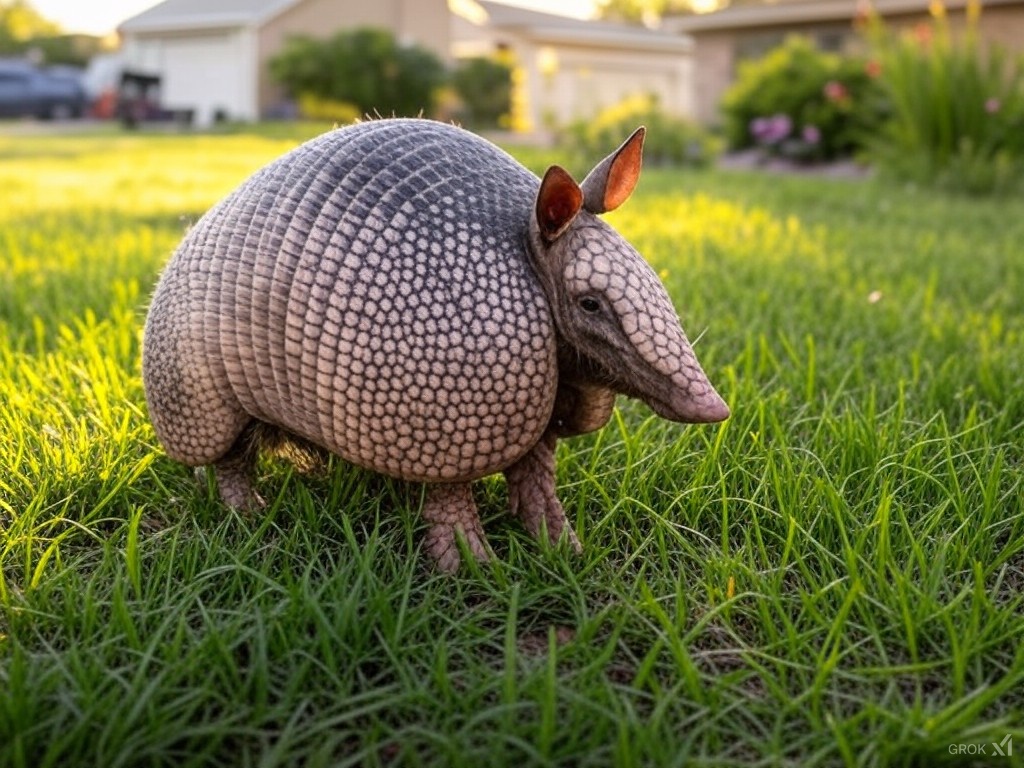Armadillos, particularly the nine-banded armadillo (Dasypus novemcinctus), can cause a variety of damages to lawns and landscapes. Armadillo trapping is done with unbaited cage traps and fencing to guide them into the traps. If an active burrow is not on the property, trapping may take a little longer.

Here’s a look at the potential issues:
Lawn Damage:
- Digging:
- Burrows and Holes: Armadillos dig for insects, primarily grubs and earthworms. They create numerous small, shallow holes (about 3-5 inches wide and up to 6 inches deep) across the lawn, looking for food. These holes can be very numerous, sometimes creating a “pockmarked” appearance on the lawn.
- Burrows: They also dig larger burrows for shelter, which can be up to 15 feet long and 3-4 feet deep. The entrances to these burrows can be quite large, around 8 inches in diameter, and can undermine the lawn’s stability.
- Turf Disruption:
- The constant digging disrupts the grass root system, leading to patches of dead or dying grass where the soil has been turned over or the roots have been damaged.
- Soil Compaction:
- Around their burrows, the soil might become compacted, which can affect water drainage and the health of the lawn.
Landscaping Damage:
- Garden Beds:
- Similar to lawns, armadillos will dig in garden beds for insects, potentially damaging plant roots or uprooting smaller plants.
- Erosion:
- In sloped areas, their digging can exacerbate soil erosion, especially during rain when water can flow into the burrows or holes, washing away soil.
Additional Considerations:
- Aesthetic Damage: The visual impact of a lawn or garden full of holes and mounds can be significant, reducing curb appeal and potentially lowering property value if not addressed.
- Safety Hazards: The holes can become tripping hazards, especially in low light or if not noticed by children or pets playing in the yard.
- Secondary Pest Issues: The disturbed soil might attract other pests like snakes or rodents that use the burrows or look for the same food sources.
Mitigation:
- Trapping: Humane trapping followed by relocation can be effective, though check local regulations as armadillos are protected in some areas.
- Deterrents: Use of deterrents like motion-activated sprinklers or ultrasonic devices, though their effectiveness varies.
- Barriers: Fencing can be used, but it must be buried several inches into the ground as armadillos are adept diggers.
- Insect Control: Reducing the grub and insect population can make the area less attractive to armadillos.
- Landscaping Changes: Planting species that are less conducive to the insects armadillos feed on might help deter them.
Armadillos are not inherently destructive, but their feeding and shelter-seeking behaviors can significantly impact a lawn or garden. Managing their presence often involves a combination of prevention and humane control methods.
